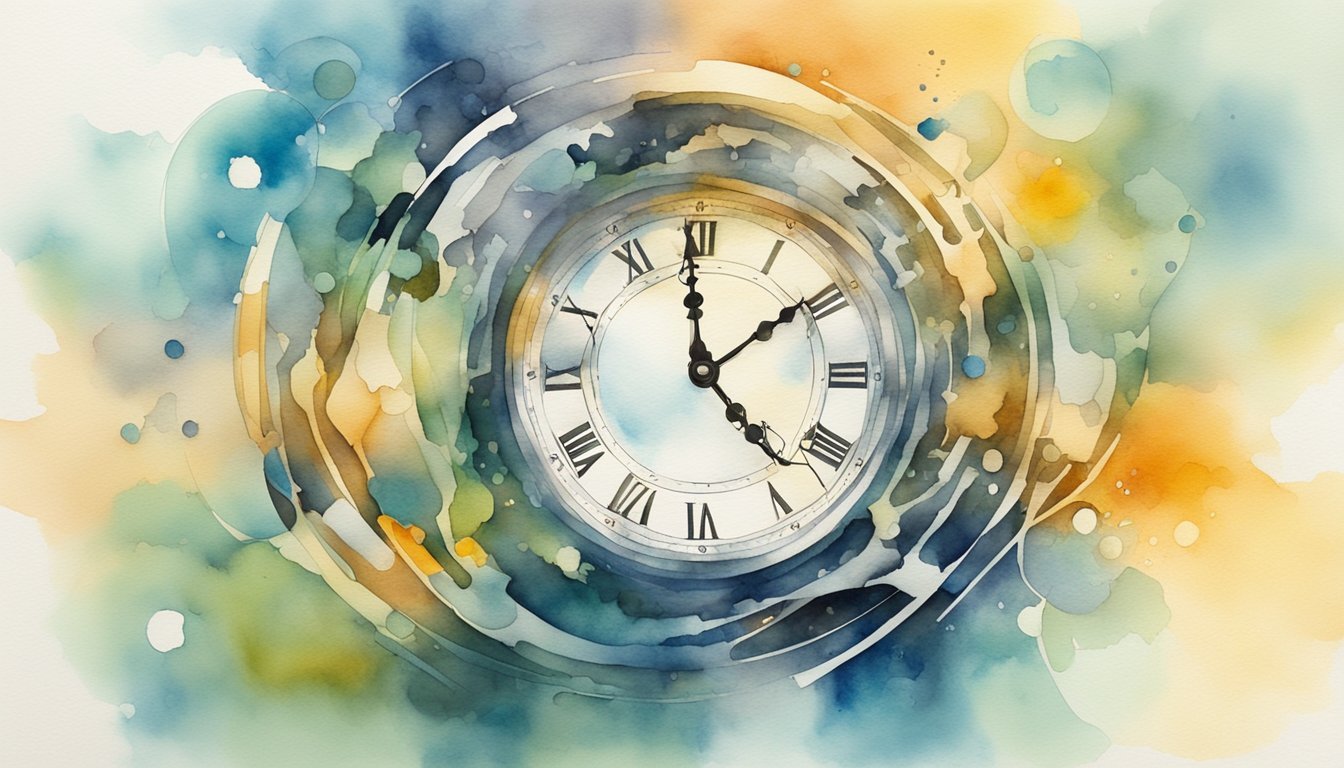Understanding Time as a Construct
Exploring the concept of time challenges our understanding of reality, introducing a blend of historical insights, scientific principles, and personal perceptions. This section delves into how time, often considered linear and absolute, is alternatively seen through various lenses – historical, scientific, and experiential.
Historical Perspectives on Time
In historical terms, time was closely tied to the natural movements of celestial bodies. The daily rising and setting of the sun, lunar cycles, and changing seasons were the earliest measures. Ancient civilizations, like the Egyptians and Babylonians, relied heavily on these cycles to create some of the first calendars. This form of timekeeping was practical and observable, but it wasn’t until figures like Isaac Newton stepped onto the scene that a more mechanistic view of time came to be accepted, perceiving it as uniform and absolute across the universe.
Time Measurement and Modern Science
The advent of modern science, particularly insights from Albert Einstein’s theory of relativity, disrupted the Newtonian view. Einstein introduced the concept that time is not a constant but is relative to speed and gravity. This was a profound shift, suggesting that clocks on a high-speed spaceship would tick slower than those on Earth. Modern physics uses the term ‘space-time‘ to describe a four-dimensional fabric, warped and distorted by mass and gravity, illustrating how deeply intertwined time and space are.
The Human Experience of Time
Our individual experience of time is marked by the ticking of the body’s master clock, with neurons firing to create perceptions and memories, and emotions affecting our sense of the present moment. Contrary to the ticking clock’s relentless progression, our personal experiences can make time feel elastic, stretching or compressing based on attention and emotions. The mind, a powerful interpreter, constructs time from our continuous stream of experiences, leading to the proposition that time is much more than seconds and minutes – it’s a social construct shaped by individual and collective consciousness.
Time in Theoretical Physics

Theoretical physics offers a profound insight into the nature of time – challenging our everyday understanding and suggesting a universe where time takes on a different character under varying circumstances. This investigation explores the complex relationship between time and the physical laws that govern the cosmos.
Relativity and the Nature of Space-Time
Albert Einstein’s general theory of relativity fundamentally transformed the concept of time by merging it with the fabric of space, forming what we now refer to as spacetime. Events that occur simultaneously for one observer may happen at different times for another, depending on their relative speeds and positions, illustrating the concept of relativity of simultaneity. Additionally, time dilation, a prediction of Einstein’s theories confirmed by experiments, illustrates that a clock moving relative to an observer will tick slower than one at rest – an effect that astronauts must account for due to their high velocities relative to Earth.
Quantum Mechanics and Temporal Theory
While relativity deals with the large scale structure of spacetime, quantum mechanics governs the behavior of particles at the smallest scales. In quantum theory, concepts such as quantized time or the arrow of time (the direction in which time flows) confront some of the traditional paradigms of physics. The Wheeler-DeWitt equation, for instance, famously suggests a model of a world without time, raising complex questions about the nature of causality and duration in a quantum universe.
Future Directions in Time Research
As theoretical physicists continue to grapple with understanding time, newer theories such as loop quantum gravity and string theory offer fresh perspectives on its fundamental nature. Italian physicist Carlo Rovelli, for example, proposes the notion of emergent time in loop quantum gravity, where time doesn’t exist at the fundamental level but emerges due to thermodynamic processes. Understanding time remains a crucial part of cutting-edge research, which involves exploring the early conditions of the Big Bang, the expansion and ultimate fate of the universe, and the enigmas surrounding black holes and thermodynamics.
Discover more about the illusion of time from this article by Nature: The illusion of time – Nature.
Learn what Einstein meant by ‘time is an illusion’ from this source: What Did Einstein Mean By Time is an Illusion? – Interesting Engineering.
Read about the debate over the physics of time in this Quanta Magazine article: A Debate Over the Physics of Time.
Explore the idea that time is also an illusion beyond what the clocks show, as covered by NPR: Time rules everything around you. It’s also an illusion.
Investigate physicist Carlo Rovelli’s thoughts on the nature of time in this article from The Guardian: ‘There is no such thing as past or future’.

